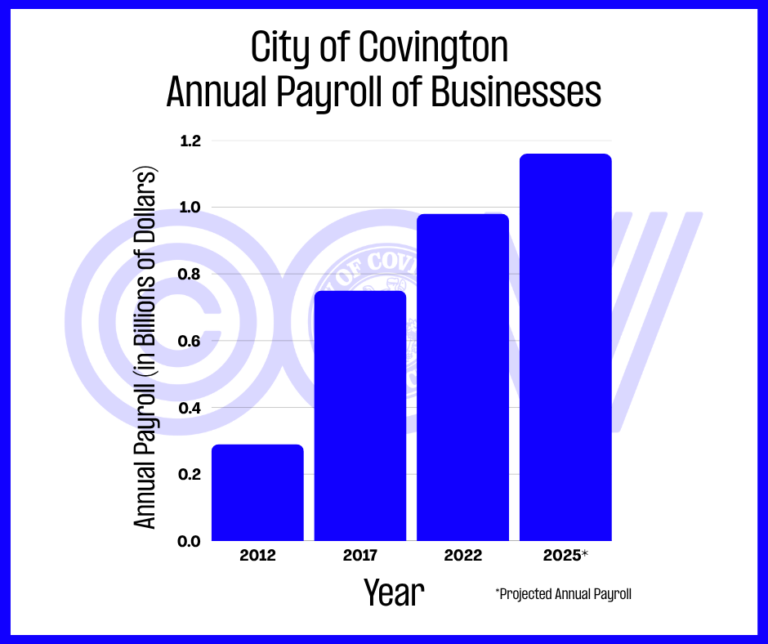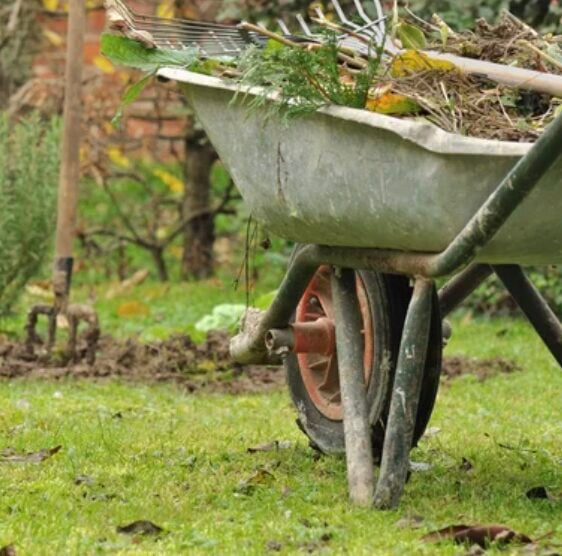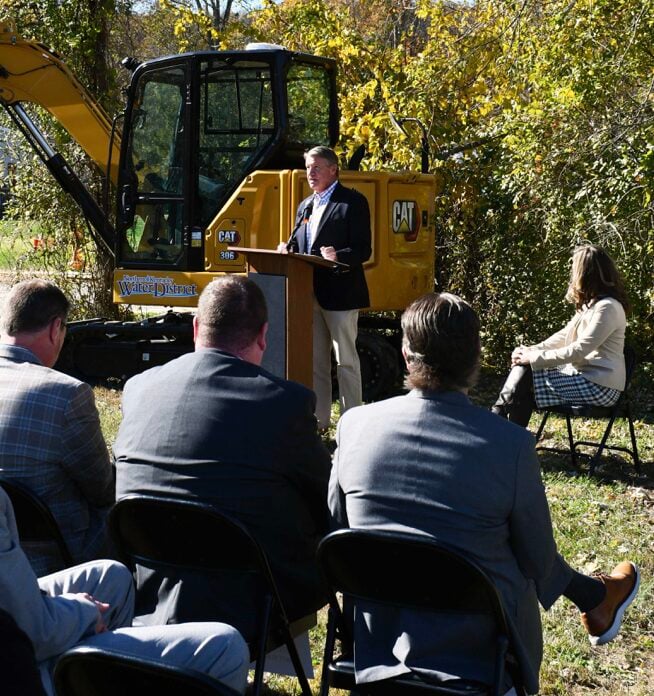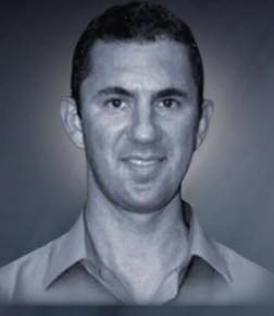By Steve Flairty
NKyTribune columnist
As a youth, I loved fishing in a local neighbor’s pond, along with a creek that formed a land border on my family’s property in rural Campbell County, in Claryville.
Growing into adulthood, I drifted away from the recreation. Four decades later, in 2005, I spent a part of a day fishing with former Kentucky Afield host Tim Farmer at a farm pond in Mason County while in the process of writing Tim’s biography, Tim Farmer: A Kentucky Woodsman Restored. I was more than rusty, and besides, I was being introduced to a type of fishing I’d never done, fly fishing.
Here’s a chapter in the book that shows what happened that day. I won’t forget. Hope you enjoy.
Angler
During an agonizing time of civil wars in the 1600’s, English writer Izaak Walton crafted a book about fishing technique and the simple, positive message of being in tune with the natural world through the practice of “angling”. It was called The Compleat Angler; or, the Contemplative Man’s Recreation. The book has become, in part, a political classic, one that was written to protest the tumultuous times and to suggest an alternative way of looking at the world. Most of all, it celebrated fishing—done right.

This book’s author thought about Izaak Walton’s work after a recent sunny and still afternoon in eastern Mason County. It was while fishing with Tim Farmer on a farm pond near Tim’s childhood home—the actual pond where Tim spent untold happy hours doing what was second nature to his young soul.
After Tim had said hello to Carol at the white farmhouse off Olivet Church Road, letting her know that he and a friend would spend some time down at the fishing hole, he nosed his diesel-powered pick-up down the hillside to the heavy iron gate. After a quick glance at Tim, the author zipped from the cab, unhooked the small chain from the post and managed, with a bit of difficulty, to open the swinging gate enough to allow for passage.
A second opening, this time down the hill, close to the pond, and consisting of two live electric wires, drew a warning from Tim.
“Hold on to the orange handles,” Tim said, and the author got the message so that there was no discomforting incident.
The expert and the novice, now both in the truck, crept along the long, level bank on grass trimmed by about a dozen cattle. The expert peered at the quiet, often muddy patches of water along the shoreline, probing for clues, sensing the environment, losing himself in his scouting expedition.
“See those fish under the tree, Steve. They’re guarding their nest. There’s a lot of bass on the bank here. Yeah, we’re gonna catch some fish today. Look, there’s a patch…there’s another. We’ve come at a good time, Steve.”
The expert was getting wound up and slipping into fishing mode, no turning back. After lifting the smallish, two-seated fishing boat down from the back of the pick-up, Tim and the author shoved the boat onto the small dock, then tilted it down onto the still waters.
The author, prepared to watch and tape record but not fish, clumsily boarded the floating piece of fiberglass and sat down cautiously on the right seat, a little self-conscious. Tim, even with the use of only one arm, was more graceful as he settled onto the left seat with a long but lightweight fly rod in hand. In no time, Tim’s floating bug, a “popper,” was sent on its way toward the bank, close to the dock.
“See that bass that just hit the bug,” the expert offered.
“How do you know it was a bass?”
“The way it hit,” Tim answered quickly.
Tim kept the line taut as the hooked small bass angled away from the boat. “That fish was hungry, can tell the way he took the hook,” said Tim. His eyes never left the action on the pond’s surface.
Another cast. A quick hit, but the fish escaped the hook.
“That was an aggressive male, Steve. Let’s remember that spot. He’s trying to protect his fish eggs.”
“Is there any chance you could catch a catfish with that popper?” asked the author, showing his ignorance.
“Not very likely. I have, but…”
“What’s the smartest fish, the hardest to catch?”
“Walleye. I don’t know about the smartest but it’s the hardest to catch.”
“What if you wanted to catch larger fish than these blue gills and bass?”
“Probably use a plastic night-crawler or some crank bait. On these small ones, I’d put on a smaller hook if I really wanted to catch every one of them.”
Tim was patient—both with the fish and with the author—and he kept reeling blue gills and bass to the boat.
“Steve, we picked a good day to be on the water,” Tim gushed as he reeled another bass toward the boat. In the boat, Tim’s two bare feet became like hands in subduing the frisky fish. He held the line about two feet from the fish’s mouth and lowered it to the boat’s floor. Almost in the same motion, both feet covered the fish, except for its mouth area.
Then he moved his hand to the fish’s mouth and deftly, but carefully, retrieved the hooks. He finished the routine by tossing the fish overboard. It was stunned but not hurt. Then he was ready to catch another fish.
The conversation turned to a side issue—losing things in the water while fishing. Yes, the expert had lost things before: sunglasses, wallet, watches, shoes. The law of averages and Tim’s complete focus on the important matter at hand, fishing, would easily account for losing things. Just part of it.
For the author in the boat, it was good to hear that the expert was human, at least when it came down to non-fishing items. He also heard the expert say that cows who wade into the pond destroyed nests and that he wasn’t partial to using worms to fish (“you always have to change bait”). Tim educated the author on many little things that day.
Then Tim decided to impart to the author some of the sterling education he had received about 30 years ago from his father—the technique of fly-fishing.
“You ready to do some fishin’?” Tim asked.
“I’m not sure.” The answer had a lot to do with the fact that the author had not had a real day of fishing since he was a young teenager—and now to embarrass himself in front of, perhaps, Kentucky’s premier outdoorsman?
“Here, take the fly rod, Steve. Now…whip the pole straight up, with force. Then hesitate, one-thousand one, one-thousand two…then whip it forward, not with as much force.”
The author jerked the pole straight up with just a little force. Immediately, he shot it forward. The line fell straight down, near the boat and 20 feet from its intended target. The popper and its hooks helped create the beginning of a serious line entanglement problem.
Tim hardly changed facial expression. The two worked together, three hands worth, to free the line and prepare for cast No. 2.
“Whip the pole straight up, hard. Hesitate. Then whip it forward. It’s in the wrist. It really is, Steve.”
The author did much better on the next cast. And with the expert’s steady coaching and encouragement, the novice fly fisherman caught four fish within the next half-hour, and, more importantly, consistently cast within several feet of the watery target. Plus, he was having fun. Kid fun. In truth, Tim Farmer may have made a lifetime convert to fly-fishing.
As the hours sped by on this comfortable May day, with caught blue gill and bass now numbering about thirty, Tim’s attention was shifting to the matter of some very large fish swimming near the surface, particularly in the more shallow end of the pond. It was cause for him to stand up and fix his eyes on some intruders, like Captain Hook watching for pirates.
“Look at those grass carp. I’ve never seen ‘em that big before. They must be 30-40 pounds!”
The expert was prepared for action.
“I’m going back to shore a minute,” Tim said. “Let me get my bow. You hold onto the fly rod, Steve.”
On the bank, the expert zipped to his truck and came back with a different piece of gear, something that looked like a cross between hunting and fishing equipment. It was a bow and arrow with a fishing reel secured to the bow, which meant that the “shot” arrow could be retrieved by reeling it in—a little hunting and a little fishing, too.
Tim again boarded the craft, armed with the hybrid bow and an intense look on his partially tanned face. He soon was standing on two slender, but strong legs. This would give him better vision and better body positioning as he pulled on the 40-pound. pressure bow.
One could sense Tim’s adrenalin level rising. Even the untrained eye of the author could see the swirling waves and the darkened shadows that revealed large grass carp on the prowl. Generally, several could be seen together, often with bubbles following behind. Though grass carp are not a danger like sharks, the sight of the fishes on patrol can appear ominous.
“My gosh, Steve. Look how big. Now…let’s keep it real quiet. They know we’re looking for ‘em.”
“I just saw one with his fin out of the water,” said the author.
Just then, Tim locked his eyes on a spot 25 feet in front of the boat. He gracefully raised the bow to eye level and grasped the tab with his jaw teeth, nearly in the same motion. With a deep breath and a tightening torso, Tim pulled the arrow almost full shaft length and released the arrow, line attached. Rather than a whistle sound, it produced a note of muffled wind and plopped hard into the muddy water, showing no sign of hitting the carp.
“Missed it,” said the expert quietly, with only a small frown observable. “Those fish are hard to see in the daylight. It’s a lot easier at night with lights on the water. But we’re going to take one out of here today. I can feel it.”
The author reeled in the popper on the fly line. It had nearly been forgotten and was trolling behind the moving boat. He noticed a few minor hits on the bait, but ignored them. He wanted no distractions now. The real action was taking place with the archer and the schools of carp.
“If we hit one of those fish, hold on ’cause it’ll take us for some kind of a ride around this pond,” said Tim.
“Are you serious?”
“Oh, yeah…they can do it.”
There were many moments of quietness except for the soft whirr of the motor and a cow bawling a few hundred feet away. Then…
“Look at that pod of fish,” said Tim.
Within a few moments one could hear the tension of the bow and drawn string, then another swoosh of the projectile and line, but again there was no indication of blood or of a large carp flopping in the water—and, of course, no ride around the pond.
Still confident, Tim reeled in his arrow and line.
“We’ll get one,” he said.
More quiet. More intense, visual searching of the pond’s surface. An abundance of patience and concentration. Then, another sighting…
Tim quietly, slowly, readied the weapon. The glint in his eye showed that the stars were in alignment, that this was the time—he would get the carp.
The shot had a different, hollow sound. The line broke immediately and the arrow sunk into the watery grave, halfway to its target. No grass carp, no weapon, no conquest. Then there was a pause…
“That finishes our day,” said Tim, who came to the pond with one arrow in his quiver. The words of disappointment were not necessary to say. They were written all over his face.
“I just knew we would get one, but I’m out of arrows.”
Then the expert and the author loaded the boat on the truck, traveled back up the hill, and went looking for something good to eat.
Even Izaak Walton got hungry.
Steve Flairty is a teacher, public speaker and an author of six books: a biography of Kentucky Afield host Tim Farmer and five in the Kentucky’s Everyday Heroes series, including a kids’ version. Steve’s “Kentucky’s Everyday Heroes #4,” was released in 2015. Steve is a senior correspondent for Kentucky Monthly, a weekly NKyTribune columnist and a member of the Kentucky Humanities Council Speakers Bureau. Contact him at sflairty2001@yahoo.com or visit his Facebook page, “Kentucky in Common: Word Sketches in Tribute.” (Steve’s photo by Connie McDonald)























